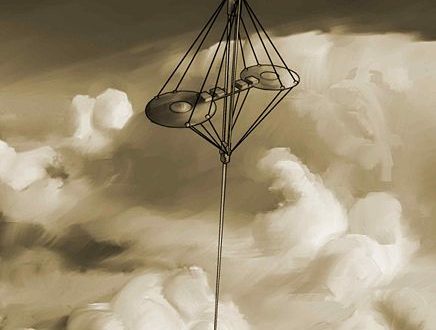Non-Rocket Spacelaunch – Tether propulsion safety issues
The use of tethers in space poses many challenges and safety issues. This third part to the tether propulsion article will focus on those issues. A lot of the challenges and safety issues of a space tether system are similar to those of a space elevator described in a previous article, but some are unique to the space tether concept.

Atomic oxygen
One major problem to space tethers in low Earth orbit is the erosion from monomolecular oxygen. When oxygen molecules (made up of two oxygen atoms) split, the resulting single oxygen atoms are highly reactive. Space tethers moving at very high orbital speeds make the problem even worse.
The solution would be to build automatic robotic climbers that would constantly scan every portion of the tether and repair any damage. Using more resistant materials as coating for the tether would also be a good idea.
Micrometeorites and space junk
Simple tethers that have been already tested in space were quickly cut by micrometeorites and space junk. The lifetime of a simple, one-strand tether in space is on average about five hours for a length of ten kilometers. This was why a lot of the early tether missions failed.
In 1996 the US Naval Research Laboratory has successfully flown a long term tether that used very fluffy yarn which remained uncut several years after deployment. Another proposal is to use a tape or cloth. Dr. Robert P. Hoyt patented an engineered circular net, such that a cut strand’s strains would be redistributed automatically around the severed strand. This is called a Hoytether. Hoytethers have theoretical lifetimes of tens of years.
Large pieces of space junk would cut most tethers, but since they are currently tracked on radar and have predictable orbits, a tether could be wiggled to dodge known pieces of junk. Another more radical solution to this problem would be to completely clean up low Earth orbit of space debris. In fact they could be collected and recycled in space and used in the construction of space infrastructure (such as satellites, space stations or even spacecraft).
Material strength
Space tether concepts such as the rotovator are currently limited by the strengths of available materials. Although ultra-high strength plastic fibers available today (such as Kevlar and Spectra) would enable the construction of rotovators that would pluck masses from the surface of the Moon and Mars, a rotovator from these materials would not be strong enough to lift cargo from the surface of the Earth. The material requirements for a rotovator and other similar space tether concepts would be almost as high as those of a space elevator. Carbon nanotubes are likely the best candidate. More on this issue can be found in the article about space elevator safety issues.
Vibrations
Computer models frequently show tethers can snap due to vibration. This is very similar to the vibrational harmonics problem discussed in the space elevator safety issues article.
The solution to this problem is almost exactly the same as for a space elevator, except that here the cable is much shorter, so the vibrations would be much less extreme and thus much easier to control. Carefully choreographing the speed and timing of each climber (elevator car that climbs the cable or tether) can cancel out all the dangerous vibrations. However, a suitable damping systems within the cable should be constructed in case it all gets out of control. That way it may be possible to dampen the resonant frequency against the Earth’s magnetosphere.
Cargo capture
Failure for a tether to capture a payload can cause problems. Several systems have been proposed, such as shooting nets at the cargo, but all add weight, complexity, and additional possibilities for structural failure.
Conclusion
Despite all the risks involved, a space tether system would be a very profitable project. It is a much simple concept than the space elevator and thus it would be much less expensive. It would bring down the spacelaunch costs considerably and would open up outer space for exploration and eventually colonization.
Links to the other articles in this series
Space Elevator:
- Non-Rocket Spacelaunch – Space Elevator
- Non-Rocket Spacelaunch – Space Elevator Safety Issues
- Non-Rocket Spacelaunch – Extraterrestrial Space Elevator Concepts
- Non-Rocket Spacelaunch – Space Elevators in Fiction
Tether Propulsion:
- Non-Rocket Spacelaunch – Tether propulsion
- Non-Rocket Spacelaunch – Tether satellite missions
- Non-Rocket Spacelaunch – Tether propulsion in fiction
Would you like to receive similar articles by email?





